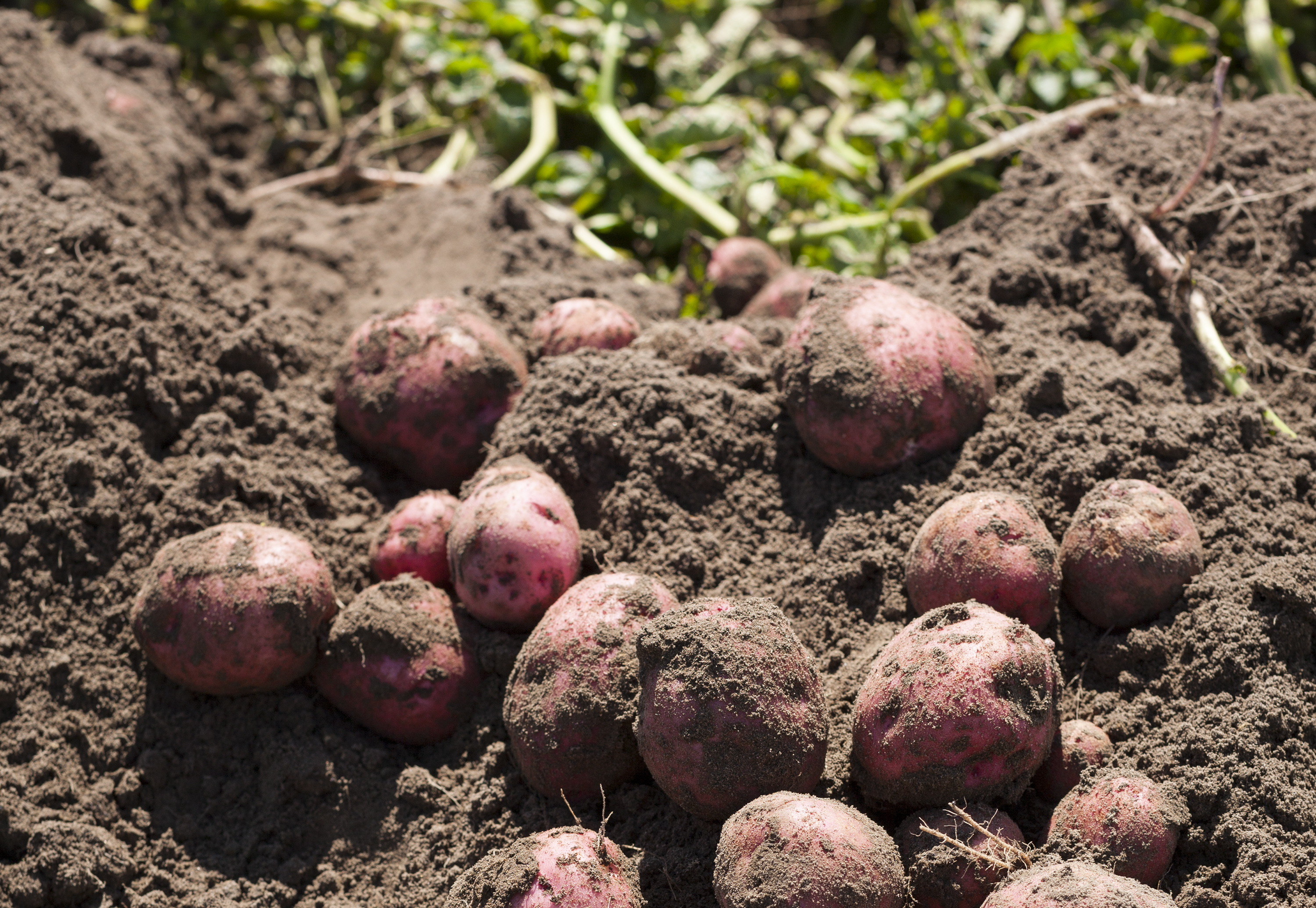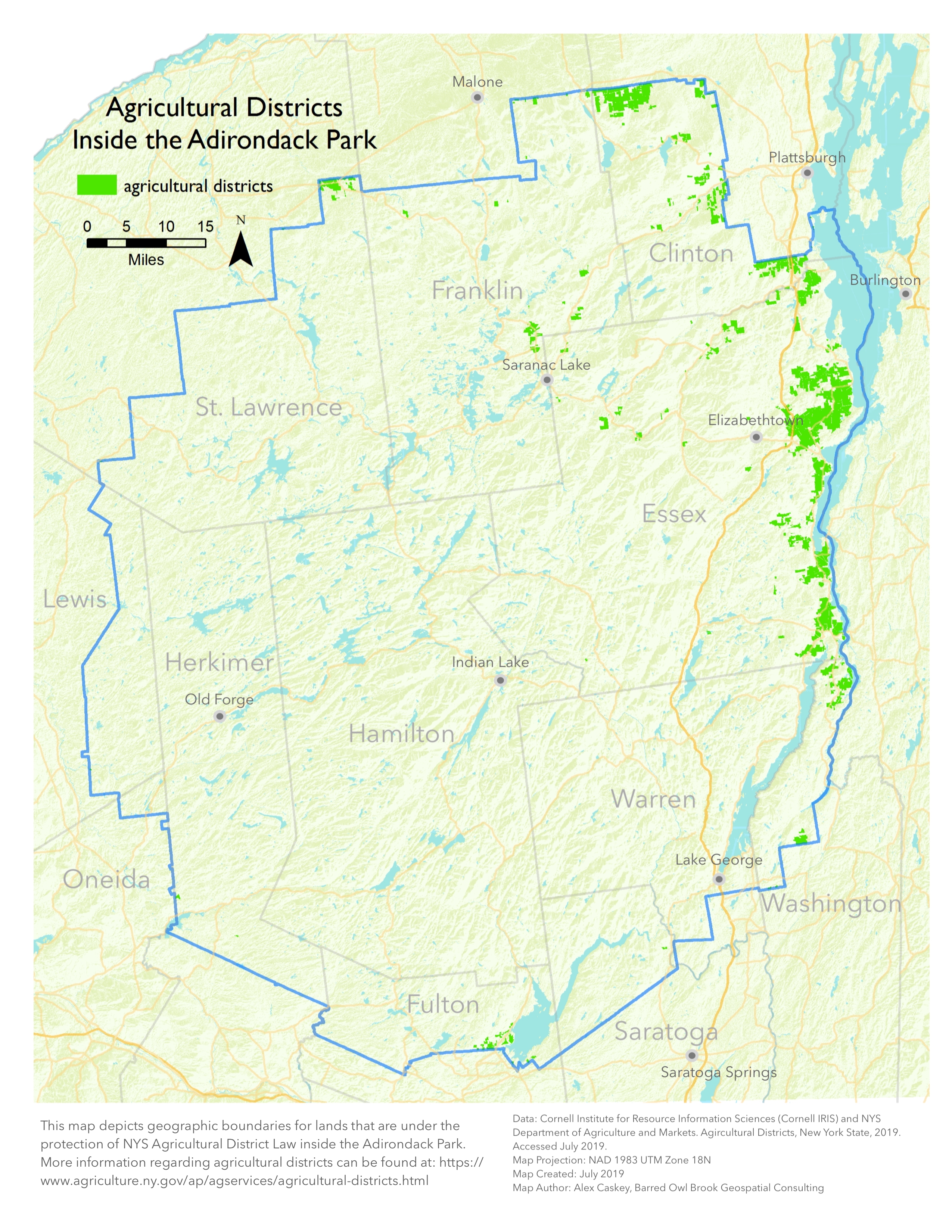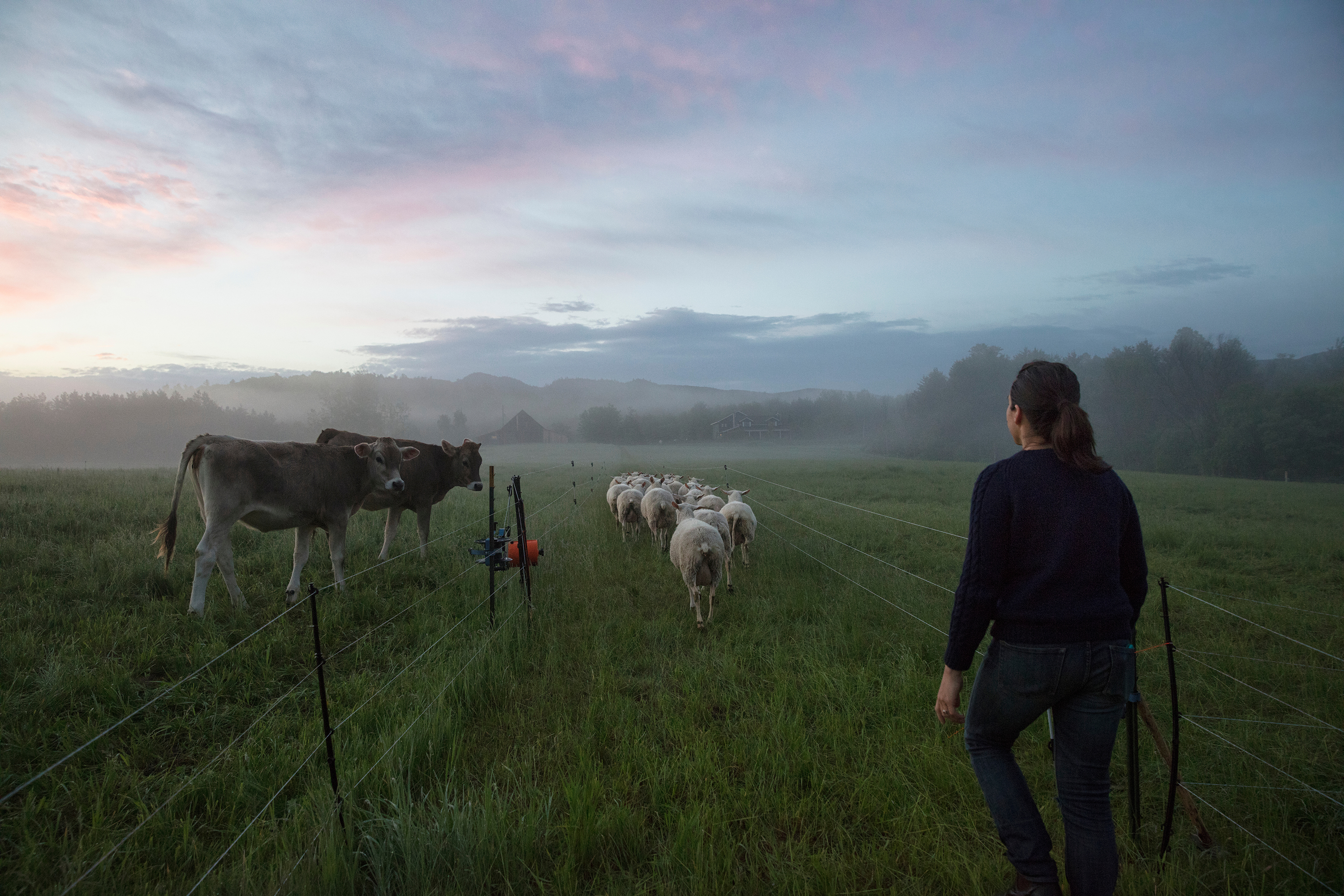
Agriculture in the Adirondacks: Past, Present, and Future
By Lizzie Fainberg – Essex Farm Institute Rural Law Fellow
Wednesday, July 17, 2019
Agriculture in the Adirondacks, much like in other regions of the country, has been experiencing both economic strain and a shift in farmer and operation demographics. In 2017, over half of farm operations in the Adirondacks experienced net losses. There are fewer farms in the region overall, although farms are, on average, getting larger. Further, as the dairy industry experiences cripplingly low milk prices, many farmers are moving away from dairy and towards beef. As these changes across the agricultural industry continue, how can we, as a region, develop an economically and environmentally resilient climate for our local farmers?
 Photo: Ben Stechschulte
Photo: Ben Stechschulte
A Brief History of Farming in the Adirondacks
Agriculture has been a part of the Adirondack Park’s American identity since the early 19th century. When early European settlers began farming in the region, agriculture was largely a means of subsistence. Common crops at this time were potatoes, root vegetables, cabbage, corn, apples, and beans. In the later years of the 19th Century, Adirondack farmers began moving away from subsistence practices and toward agriculture as an economic activity. As this shift occurred, many farmers turned to growing commodity crops such as wheat, hops, potatoes, and rye.
This change presented both benefits and drawbacks to the area. Due to the growing urban populations of New York City and Boston, Adirondack farmers enjoyed new markets to sell grains, wool, and other agricultural commodities. However, as farmers grew dependent on these markets, they became vulnerable to market fluctuations and competition from other agricultural areas of the country. In the latter half of the 19th century, production costs rose, crop prices declined, and competition for commodity markets from the Midwest increased. Because of these factors, agriculture across the Adirondack region generally declined. That decline continues today and is putting Adirondack farmers in a precarious economic situation.
Current Trends in Adirondack Agriculture – 2017 Census of Agriculture
In April of this year, the National Agricultural Statistics Service released the 2017 census of agriculture, which includes data specific to New York State. This report, released every five years, shows emerging trends in agricultural practices across the country. Based on the most recent census, the Park region accounted for about 11 percent of the market value of all agricultural products in New York state. There are also about 5 percent fewer farms in the Adirondack Park in 2017 than in 2012 although total cropland has increased by about 2 percent. In both 2012 and 2017, about 50 percent of farms in the Adirondack Park have experienced net losses. Below is an in-depth look at current trends in Adirondack agriculture.
Agriculture Districts are a planning tool that define areas within a local jurisdiction where farming is the preferred economic activity. Districts may be voluntarily created by landowners or they may be designated in a local land-use plan. The map below is a proxy tool to show what land in the Adirondack Park is currently available and suitable for farming. This proxy represents a minimum, not a maximum.

Certified Organic
Sales in certified organic agriculture in the Park account for a small percentage of total crop sales. In 2017, sales of certified organic agricultural products reached 5 percent, up from about 1.2 percent in 2012. According to one local farmer who manages 112 acres of cattle, hay, and alfalfa, farmers in the region do not have a lot of incentive to switch to certified organic and, the majority of agricultural products grown in the Park are not certified. However, he reported that more farmers in the area practice organic methods rather than go through the organic certification process due to the high associated costs.
Decline of Dairy in the Dacks
The dairy industry across the nation has been struggling due to low milk prices and Adirondack dairies are no exception. Between April 2016 and April 2017 alone, Base Class 1 milk prices declined by 12 percent. In the Adirondack Park, many smaller dairies have been forced to sell, while larger operations have consolidated, a trend that is reinventing the shape of Adirondack dairy production. Between 2012 and 2017, the region saw roughly an 18 percent decrease in milk cow operations. However, the region saw only a 2 percent decrease in the number of milk cows. In the same timeframe, the number of beef cow farms in the region increased by about 11 percent and the number of beef cows increased by about 20 percent. One local young farmer who currently raises 26 head of cattle in Essex County, has noted this change. He remarked that many dairy farmers in the area have switched to raising beef cattle after being pushed out of the dairy industry by low prices.
Agriculture Operation Production Costs in 2017
The 2017 census shows that many costs associated with agriculture production have been on the rise. The average costs of labor, chemicals, fertilizers, seeds, land rent, and property taxes have all increased between 2012 and 2017. Notably, the average cost of hired labor per farm in the Park has increased by about 30 percent during this period. Further, while the average dollar amount spent on chemicals per Adirondack farm has increased, the number of farms purchasing chemicals have declined. In 2012, 33 percent of farms in the region reported purchasing chemical inputs while in 2017, this number dropped to 25 percent. The number of farms purchasing fertilizers and soil amendments has stayed relatively constant. One of the few expenses to decline in the region is the average cost of fuel, gasoline, and oil, which declined by roughly 17 percent between 2012 and 2017.
Adirondack Farmers and Farm Bill Subsidies
Considering the number of farms in the region, few Adirondack farmers receive federal subsidies from Farm Bill programs with an apparent downward trend. In 2012, 25 percent of area farms received federal subsidies while in 2017, this number decreased to 14 percent. The popularity of federal conservation programs in the area has also declined in recent years. In 2012, Only 2 percent of farms in the area received some form of subsidy from federal conservation programs. In 2017, this number declined to a mere 1.5 percent.
The Future of Agriculture in the Adirondack Park
Agriculture can provide many benefits to the Park, including creating jobs, bringing young families to the region, sequestering carbon, and producing food—the substance upon which we all depend for our very existence. For farms to thrive in and provide these benefits to the Adirondacks, it is crucial for new farmers to understand their markets and for consumers to reflect on their food choices.
While the average age of the Adirondack farmer is increasing, a new and younger crop of farmers is flocking to the area. In 2017, 55 percent of agricultural producers in the area were over 54 years of age. Simultaneously, 28 percent of principle producers in the area are new and beginning farmers (defined as less than ten years of agricultural occupation). This generational shift presents us with an opportunity to revive agriculture in the Park with an eye toward increasing local economic development and protecting the region’s incredible environmental resources. However, whether this shift represents a true change in the face of Adirondack agriculture or only a fleeting local food movement will depend on our ability as a region to support the Park’s agricultural future.
 Photo: Lisa Godfrey, Blue Pepper Farm, Jay, NY
Photo: Lisa Godfrey, Blue Pepper Farm, Jay, NY
Going forward, what can we, as a region, do to support the future of Adirondack Park agriculture? Dr. Marco Turco, SUNY Plattsburgh professor and rural development expert, urges area farmers to grow crops that naturally thrive in the region, raise livestock that are financially viable, and to collaborate to make the most efficient use of the local and regional markets. He further recommends that farmers garner a comprehensive understanding of the economic and financial forces that will inevitably affect their business. These forces often include national and international agricultural markets and cultural trends. Beyond these suggestions, Adirondack farmers need additional resources for information regarding available government subsidies and grants as well as financial assistance as they navigate this risk-prone occupation.
The Essex Farm Institute, a Program of the Adirondack Council, acts as an advocate, representing the policy interests of local farmers and educating our policy makers about the realities of farming in the Adirondacks. EFI is also a convener, bringing together diverse partners and their knowledge to encourage actions that: improve farms’ ability to mitigate and adapt to climate change, create links between local food and local population health, and strengthen the economic viability of regional farms for many years to come. Statistics in this report come from the USDA Agriculture Census 2017.
Additional Sources:
Glenn Harris, The Hidden History of Agriculture in the Adirondack Park, 1825-1875, 83 New York History 165, (Spring 2002).




